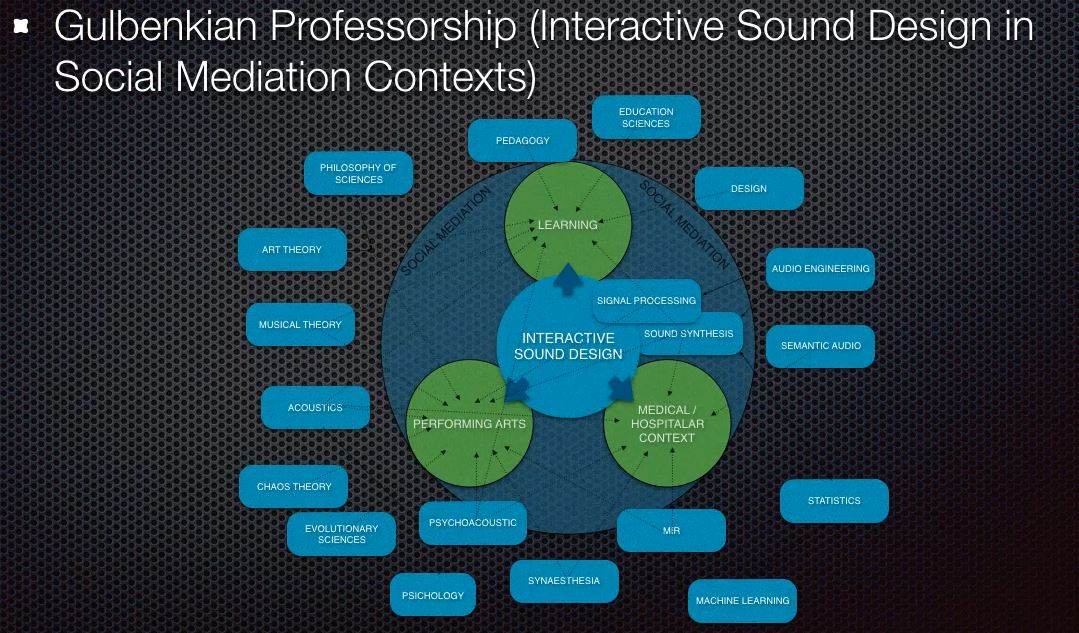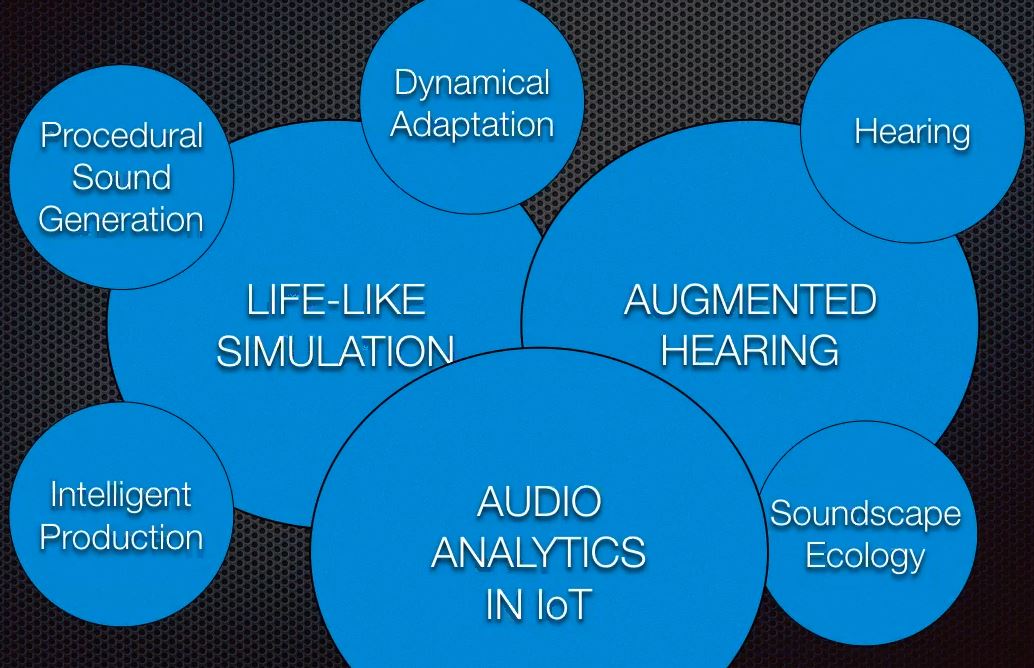Blue sky visions on sonic futures
Pedro Duarte Pestana was the final guest speaker who joined us virtually with his presentation ‘Career Management in Music Technology / Knowledge Engineering in Music Technology and Sonic Arts’ from Porto. The Sonification seminar series was part of the MCT Spring semester 2019, curated by Anna Xambo. This session was facilitated by Eigil Aandahl.
Pedro Duarte Pestana (Lisbon, 1975) has a background in engineering and worked professionally as an sound engineer and music producer for 15 years before entering academia full-time. It is a pleasure and a very interesting challenge to introduce his complex curriculum vitae along his thoughts and projects he was and is still involved in. As they do mainly gravitate around intelligent audio technologies in musical and non-musical context, he works as a researcher and consulter (intertwined with industry) for emerging audio technologies and intelligent systems.
Pedro was the first student in Portugal who held a PhD in computer music. He teaches currently at the UCP in Porto interactive sound design. Recently Pedro worked in media art installations and with high profiled artists such as Bill Fontana. In one of his other ‘previous lifes’ as a sound engineer, he worked for figures in the classic acoustical portugese scene like Teresa Salgueiro, Pedro Joia, Mario Laginha among many others. Pedro was mostly known for bringing consistently new and unconventional approaches into the field, his mindset was always that of a tinkerer and hacker. Frustrated by the iterative processes that came along the profession of an audio engineer like microphone placing, he started to develop and research on automated mixing procedures. Pedro would for example build a robot that could position the microphones for him. He also designed a multi-touch interface in the 1990s, long time before they were commercially available. Following everything that seemed interesting to him between his MSc and PhD like teaching or building recording studios, he could gave us pretty precious, interdisciplinary advices for pursuing careers in music technology and its related fields.

Automated Mixing systems
Pedro’s vision and that of his colleagues during his PhD studies was to artificially replicate what a human mixing engineer could do. An algorithm performs with more ease and makes it respond to different heuristics at a click of a button, so sais Pedro. Many aspects of his research in automated mixing systems sparked wider interest and attracted also the industry. The community and industry around this approach grew quite fast. It challenged him to push his research in a certain direction that were more adapted to marketplace driven questions.
As a Gulbenkian Professor he currently researches interactive sound design and audio-content analysis. The novel approach here said Pedro, is that interactive sound functions as a social mediator of engagement between human actors. A machine, always equipped with some sort of intelligent hearing, either acts as an an antagonist or as a ‘helper’ within human interaction.
Sonification of care - or healthy sonic futures
In the Gulbenkian project Pedro’s research group focused on 3 case studies based on generative algorithms either being agents of facilitation or blockers of everyday interaction between humans. For the context of the MCT sonification course there is especially one interesting case study among the presented. In that, sound design is being applied for aural feedback in live support machines and EGG systems by health care professions. How can the sound be designed in a way that it has an informative character to care givers and at the same time enables to soothe those in need of help? He calls the system behind the process curated sonification as there is no one-to-one mapping of features to sonic parameters. Apparently most of the studies for this project were undertaken with offline data which poses questions to real-world results. However the analysis is still ongoing. Based on his own career, he pointed out possible career options and sees great potential in “audio analytics” in particular, as reflected in the figure below.

Questions and answers
One important question was tackling the elaborations on corporate audio analytics. How can privacy be sustained in an unregulated field where data collection is so easy and profitable with almost no safeguards? Based on the fact that audio analytics are about to enter the internet of things with extra-ordinary precision, machines around us will get better at their listening performance likewise. The fluctuations of our own environment in terms of mood and emotional prediction are getting increasingly transparent through utterances, footsteps and breathing intensity for example. Predicting future happenings would come with ease and great accuracy. The concept of privacy, he confirms, will alter irreversibly within the next decades. Another questions pointed out on the academic establishment, especially the dilemma of publishing (‘publish or perish’) he illuminated. The common patterns of recognition trouble would have led into a situation in which many researchers face the (on the long run economic) pressure of publishing for the sake of being perceived rather than out of the need to contribute with new knowledge. Consequently there would not only be a certain predictability in some areas of research, but also having too much similar information at hand potentially risks dissolving the essential information, to summarize it briefly.
Reflections
There were a lot of interesting aspects, aynyhow the most relevant from a societal point of view I think were Pedro’s elaboration on audio analytics which were mentioned in the Q&A. Having a a clear opinion and a statement from a scientific researcher with audio engineering background who basically has experiences with machines acting as ‘human antagonists’ gives it even more weight. It poses furthermore new challenges for societies and thereby potential opportunities and new tasks. From a personal aspect however I found it helpful to become aware of how a field in academic research can spark also into the market place. Even I don’t see myself working with automated mixing technologies for example, it could apply for any new and relevant field. Also the possibilities that come along with emerging technology research. While ‘classical’ scientific academic disciplines would require ruthlessness to achieve a certain degree of interesting and valuable work, a novel area would act much more forgiving towards mistakes.
